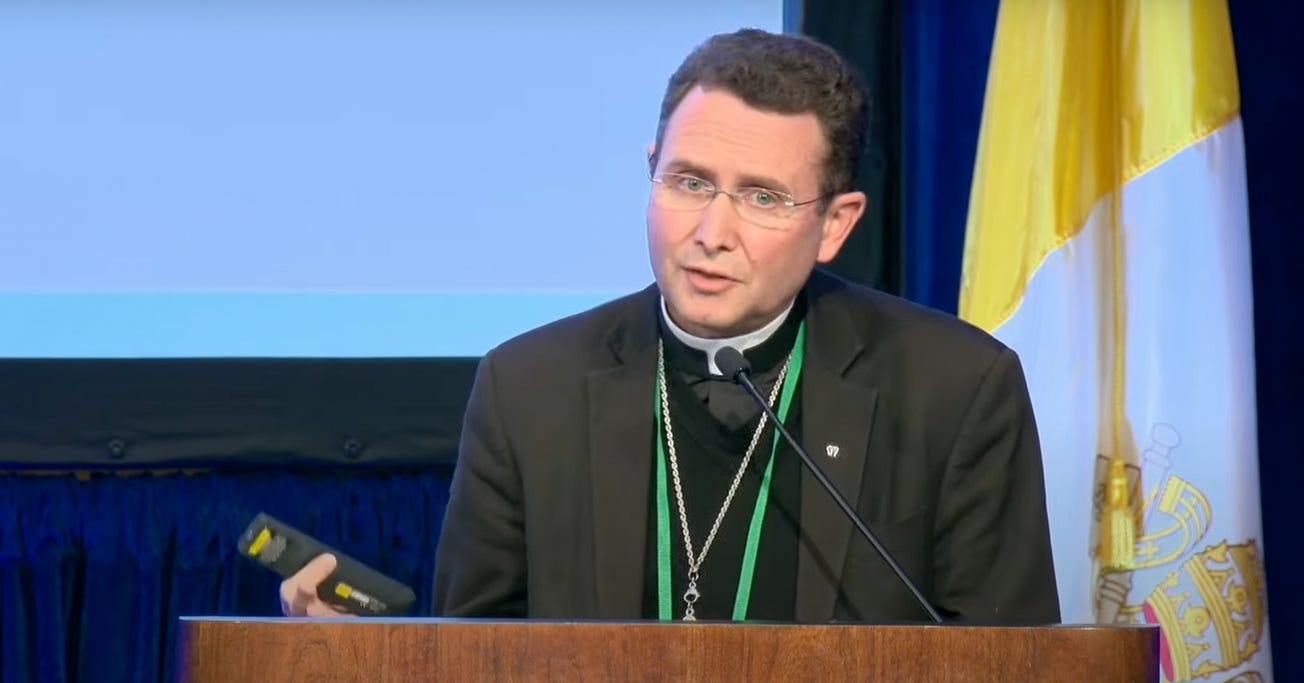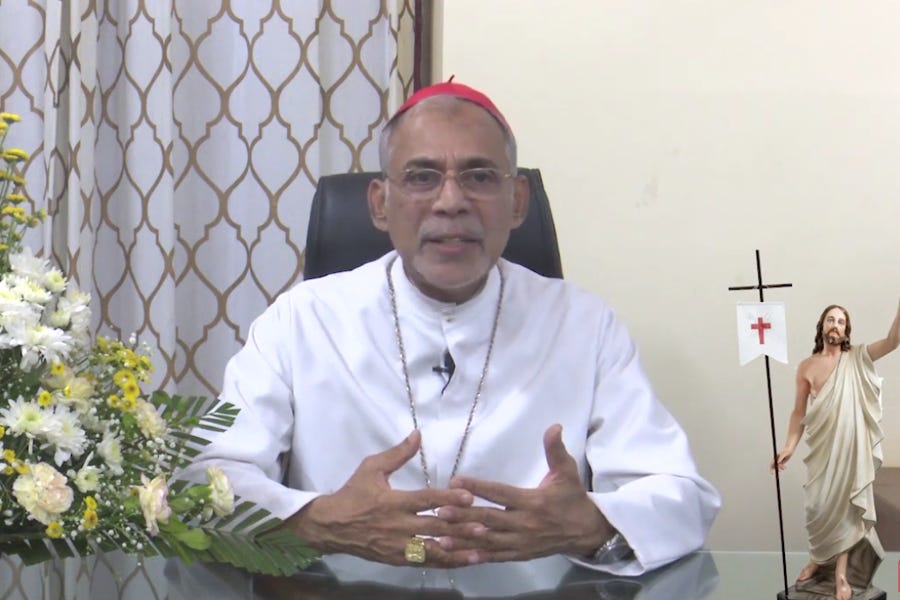The Holy See announced on Wednesday that Pope Francis had “relieved” Bishop Daniel Fernández Torres of the “pastoral care of the Diocese of Arecibo” in Puerto Rico and appointed an apostolic administrator to assume governance of the diocese.
It was a highly unusual announcement — bishops tend to only ever leave office by resignation, or by death. The move seemed to come as a surprise to Torres, and has made headlines around the globe.
But it has also raised a question: Can a pope just “fire” a diocesan bishop?
The Pillar explains.
What happened?
The announcement did not specify the reasons for Torres’ removal; he is 57 years old and in good health. But in a statement published on the diocesan website, the bishop gave his version of events, and branded the pope’s action “totally unjust.”
“A successor of the apostles is now being replaced without even undertaking what would be a due canonical process to remove a parish priest,” Torres said in his March 9 statement.
“I want you to know that it is not for me to explain a decision that I cannot explain myself, even if I accept it with the patience of Christ for the good of the Church.”
“I have not been prosecuted, nor have I been formally accused of anything,” he said, “simply one day the apostolic delegate verbally communicated to me that Rome was asking me to resign,” he added.
The bishop said he was told that, while he had not committed any canonical offense, he, allegedly, “had not been obedient to the pope, nor had [he] had sufficient communion with [his] brother bishops of Puerto Rico.”
Torres said he had refused to offer his resignation. He said he was incredulous that he would be removed without any canonical cause or process.
Neither Torres nor the Holy See have offered an explanation of the bishop’s alleged disobedience of the pope.
But various media reports have noted that the bishop resisted sending his diocesan seminarians to attend a new interdiocesan seminary, which was approved by the Vatican just under two years ago.
Torres also refused to sign a 2021 joint statement issued by the Puerto Rican bishops, which said Catholics have a “duty to be vaccinated” against the coronavirus and “[did] not see how a conscientious objection can be invoked from Catholic morality.”
The bishop apparently declined to sign, even after he was asked to do so by the pope’s apostolic delegate to Puerto Rico. It has also been reported that Torres was subsequently summoned to Rome by the pope, but failed to go, citing the pandemic.
Torres had previously issued his own letter, observing that the choice to receive a vaccination is a matter of personal conscience — in line with the Vatican’s own statements on the subject.
The Law
The Code of Canon Law identifies four ways diocesan bishops can lose their office: death, transfer, resignation, or criminal penalty.
Resignation
Canon 401 provides two reasons for a bishop to resign:
Paragraph 1 states that bishops are “requested” to present their resignations when they reach the age of 75, the ordinary retirement age. But the canon specifically says this is a “request,” not a “requirement,” in deference to the long-established right of the bishop to his see, as a successor of the apostles, unless he has committed some canonical crime.
Paragraph 2 of the canon says that bishops are “earnestly requested” to resign if they become unable to fulfill their office for reasons of health or “some other grave cause.” But again, the law frames the matter as a request — resignations cannot be compelled if they are to be valid.
Until recently, when the Apostolic See announced the resignation of a bishop, the bolletino would specify if the resignation was offered according to paragraph 1, or 2. That practice has lapsed in recent years.
Privation
Some canonical crimes, for example abuse of office, can be punished by privation of ecclesiastical office, including that of diocesan bishop.
But canonical penalties have to be imposed as a result of a legal process: either a formal trial or a canonical extrajudicial process.
Pope Fracis has broadened the list of crimes for which bishops specifically can be deprived of their offices through two pieces of canonical legislation: Come una madre amorevole and Vos estis lux mundi. But in all those cases, loss of office is expected by canon law to follow a clearly delineated canonical process and a guilty verdict.
The most grave crimes in the Church, heresy, apostasy, and schism carry with them the automatic penalty of excommunication, which includes a suspension from office. Apostasy and schism — the refusal of submission to the Roman Pontiff or of communion with the bishops subject to him — also incur an automatic loss of ecclesiastical office.
But to take effect, these penalties have to be formally declared by the Church’s proper authority.
It is worth noting that formal schism is very narrowly defined by the Church, and involves issues only of the faith, sacraments, or legitimate governance.
How does all this play out?
Removing a bishop from office is a serious matter in the Church, and popes have customarily been reluctant to do it except in the most serious cases, because the Church presumes that a bishop has the right to lead and govern his see.
Even when a diocesan bishop has faced a formal investigation under the norms of Vos estis lux mundi, he is usually asked to resign, rather than see the pope remove him from office, in part because of the presumption of his right to office.
In the past, when popes have determined that a bishop is no longer suited for ministry, even gravely so, they have usually shied away from forcibly removing him — even in dramatic circumstances.
In 1986, an apostolic visitation of the Archdiocese of Seattle found evidence of serious problems of governance and teaching by Archbishop Raymond Hunthausen — including systematic violations of the Church’s discipline on the reception of Communion, and the “distortion” of Church teaching on human sexuality. But in response, Pope John Paul II appointed then-Bishop Donald Wuerl as auxiliary bishop of the archdiocese, giving him special faculties that allowed Wuerl to effectively assume governance of the diocese in several areas, while leaving Hunthausen in place.
In 1859, Bishop James Duggan was appointed as the fourth Bishop of Chicago, at the young age 34. But 10 years later, Duggan was declared “hopelessly insane” and moved to a mental institution.
The situation became a canonical catch-22.
Because of his mental illness, Duggan was unable to validly resign his office — lacking the mental capacity to do so. At the same time, Pope Pius IX considered it unjust to formally remove Duggan from office because he had not committed any canonical offense.
Instead, the pope appointed a coadjutor bishop with faculties to govern the diocese in Duggan’s place. The issue was only resolved 11 years later, when Duggan was sufficiently recovered to place a valid act of resignation.
Of course, that isn’t to say no bishop has never been deprived of his office without a canonical trial, but it is very rare.
In 2011, Pope Benedict XVI “relieved” Bishop William Morris of his office as Bishop of Toowooba, Australia, after years of back-and-forth between the bishop and the Vatican, which included an apostolic visitation of the diocese, kicked off by a pastoral letter from Morris in which he called for the Church to consider ordaining women to the priesthood — something the Church teaches is a sacramental impossibility, and which Catholics are obliged to “embrace and retain.”
A person who rejects a teaching on this level, according to canon law, is “opposed to the doctrine of the Church.” Part of the question was whether Morris had done enough to incur a formal canonical penalty, or just skirted close to the line.
What about Puerto Rico?
Neither the Vatican or Bishop Torres have given any specific reason for his removal from office, and there may be factors as yet unknown.
But disagreement with other Puerto Rican bishops over the issues of vaccines or choice of seminary would not come close to meeting the bar of schism in canon law.
To commit a formal act of schism, one must breaking communion with bishops who are themselves in communion with the Holy See on matters of the faith, sacraments, or hierarchical governance of the Church.
And while the other bishops of Puerto Rico might have a common view on issue of vaccines, and while that view might even comport with the pope’s own personal opinion on the subject, Torres’ own public statements on the issue appear to align with the Church’s official position as defined by the Congregation for the Doctrine of the Faith.
In a similar way, while other bishops might be united in a plan to use a single seminary for the dioceses of Puerto Rico, the bishop is not obliged by canon law to send his own seminarians anywhere against his own judgment.
As for reports that Torres was summoned to Rome last year and failed to go, pleading inability to travel because of the pandemic, it is certainly possible that Francis could have construed this as an act of defiance. But that refusal would not meet any previously defined canonical standard of “refusal of submission” to the authority of the pope.
Bishop Morris of Toowoomba, for example, refused several formal orders to come to Rome to discuss his rejection of Church teaching, and he remained in office for five further years, and was subject to a formal canonical visitation.
For his part, Torres himself explicitly denied he is schismatic in any way, saying on Wednesday that he continues to “express [his] communion in the Catholic faith, with the Pope and [his] brothers in the episcopate, despite [his] perplexity at an incomprehensible arbitrariness [in the decision to remove him].”
So can the pope just fire a bishop?
We don’t know the details of why Pope Francis decided to remove Torres from office.
But assuming Torres is right to claim that Francis removed him “without even undertaking what would be a proper canonical process to remove a parish priest,” that doesn’t mean the pope can’t do it.
Notwithstanding the absence of any evidence of a canonical a crime, or the reticence of previous popes to remove diocesan bishops by papal fiat, Francis does have, according to canon law, “supreme, full, immediate, and universal ordinary power” in the Church, and specifically the “primacy of ordinary power over all particular churches [dioceses].”
While the pope is “always joined in communion with the other bishops,” the law explicitly states that “he nevertheless has the right, according to the needs of the Church, to determine the manner, whether personal or collegial, in exercising his office.”
In short, Pope Francis can just fire a bishop.
More to the point, in Torres’ case Francis has publicly decreed that he is removed from office, and according to canon law “no appeal or recourse is permitted against a sentence or decree of the Roman Pontiff.” Indeed, attempting to appeal a decision of the pope is actually a canonical crime.
Bishop Torres may not like, or even understand the reasons for his removal. And it may be true that he has committed no canonical offense, and received no kind of due process. Torres might believe the decision to be entirely unjust, and it very well might be unjust.
The Church does not hold that the charisms of the Holy Spirit protect popes from bad decisions in governance -- and every pope in history has made some.
But does the pope have the power to do it? He does.





